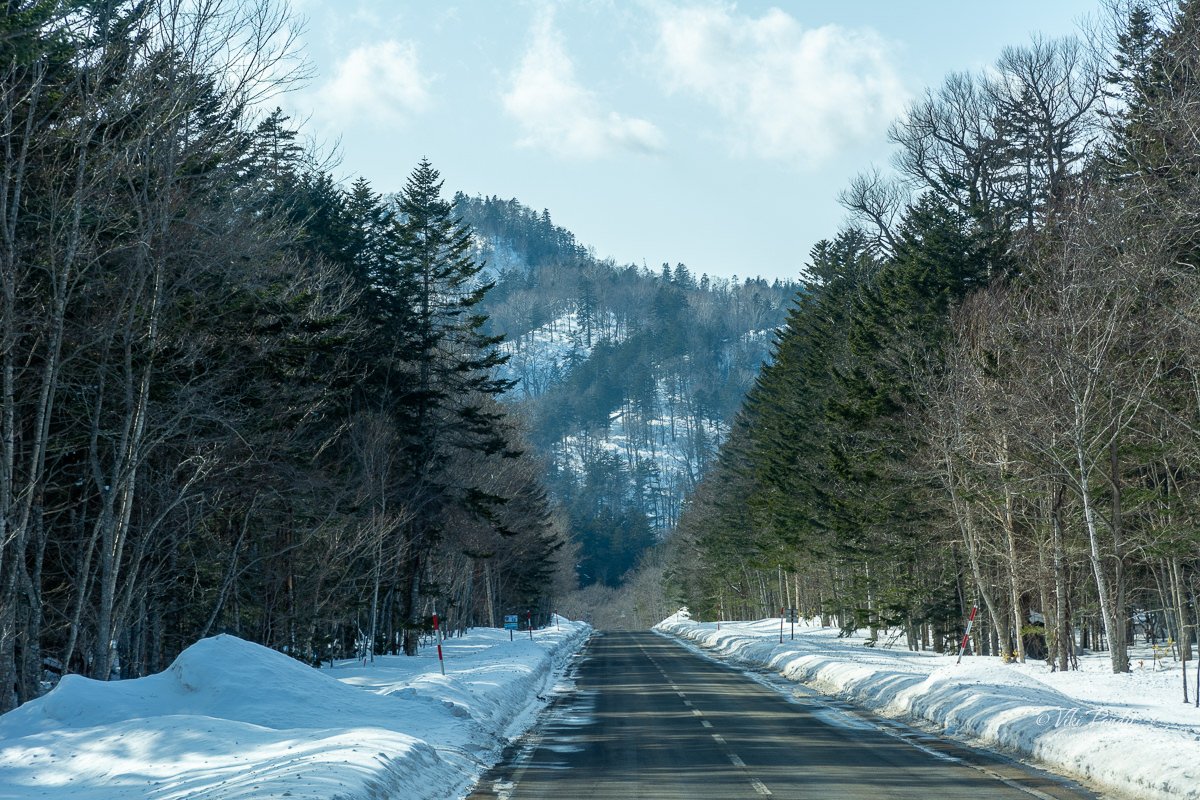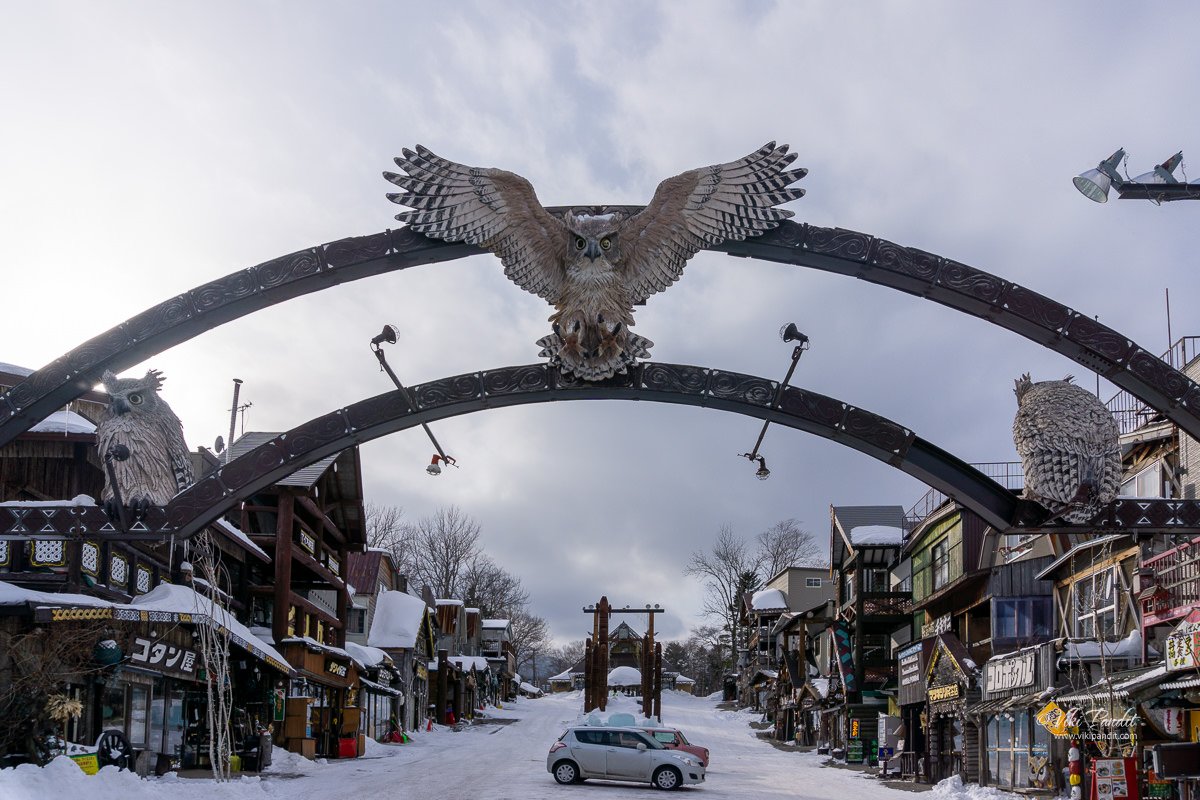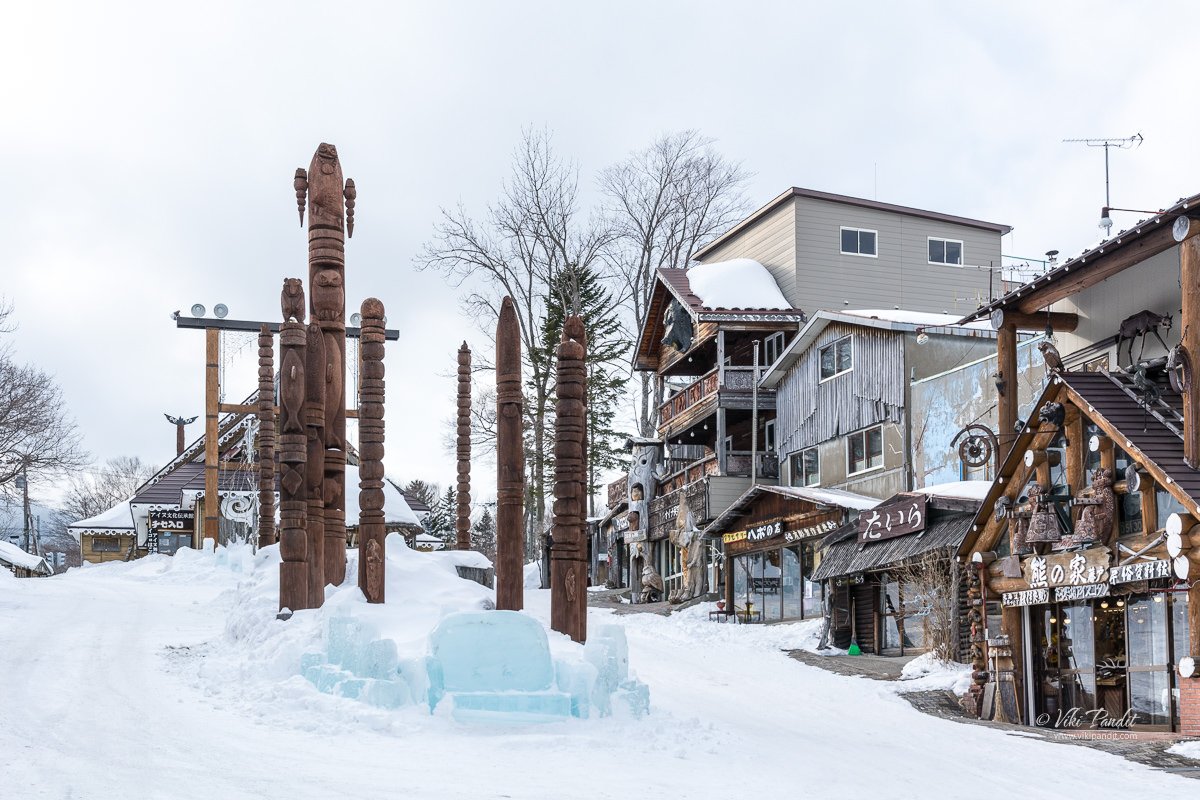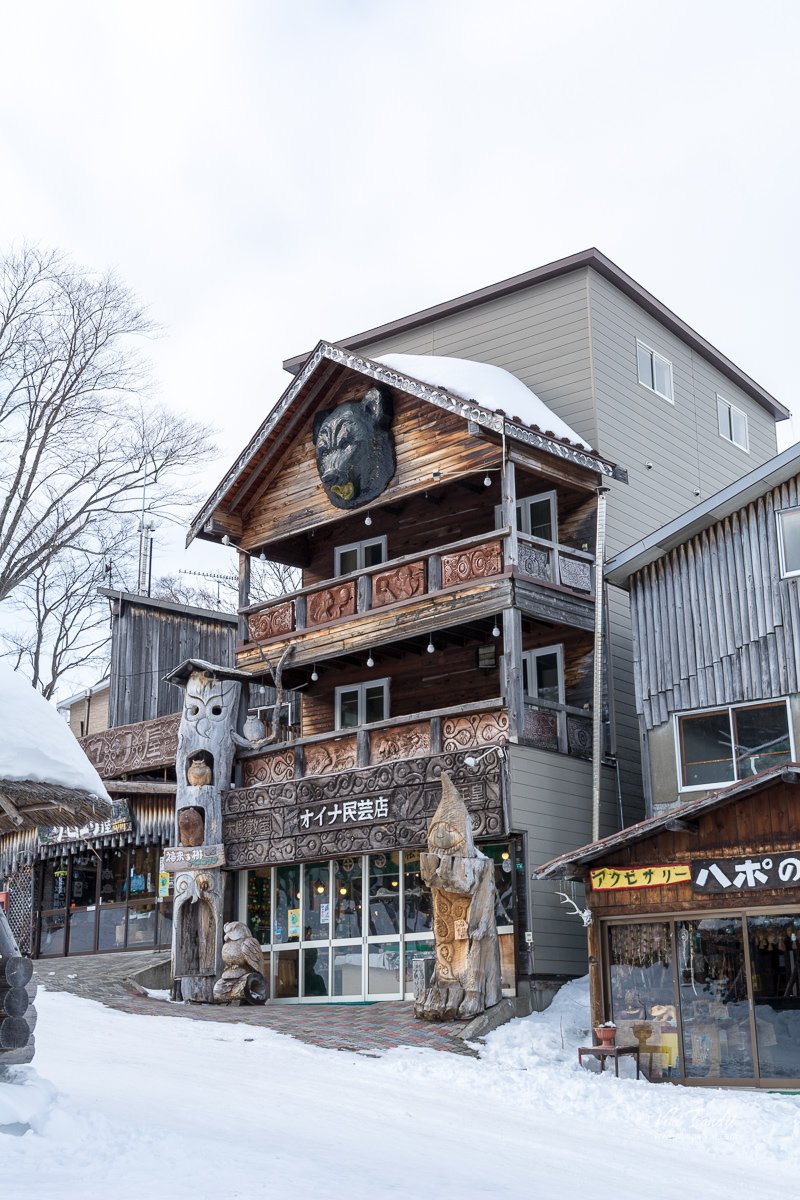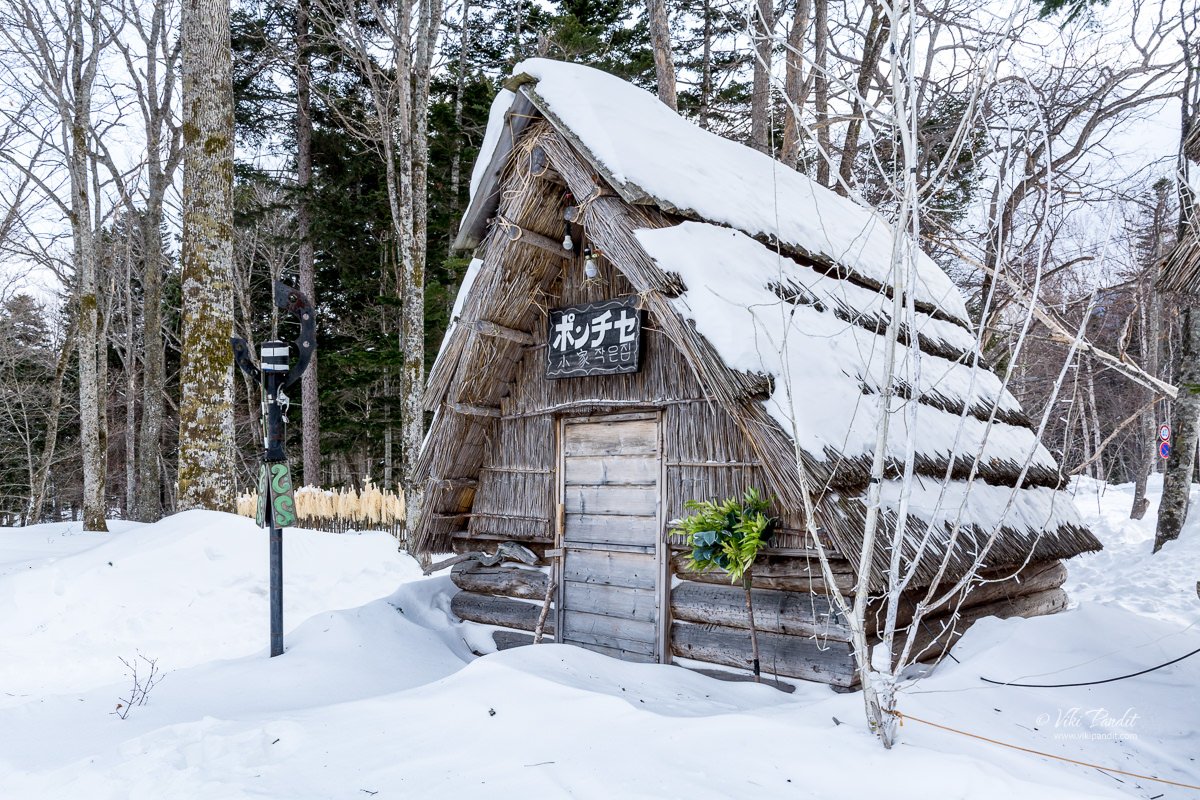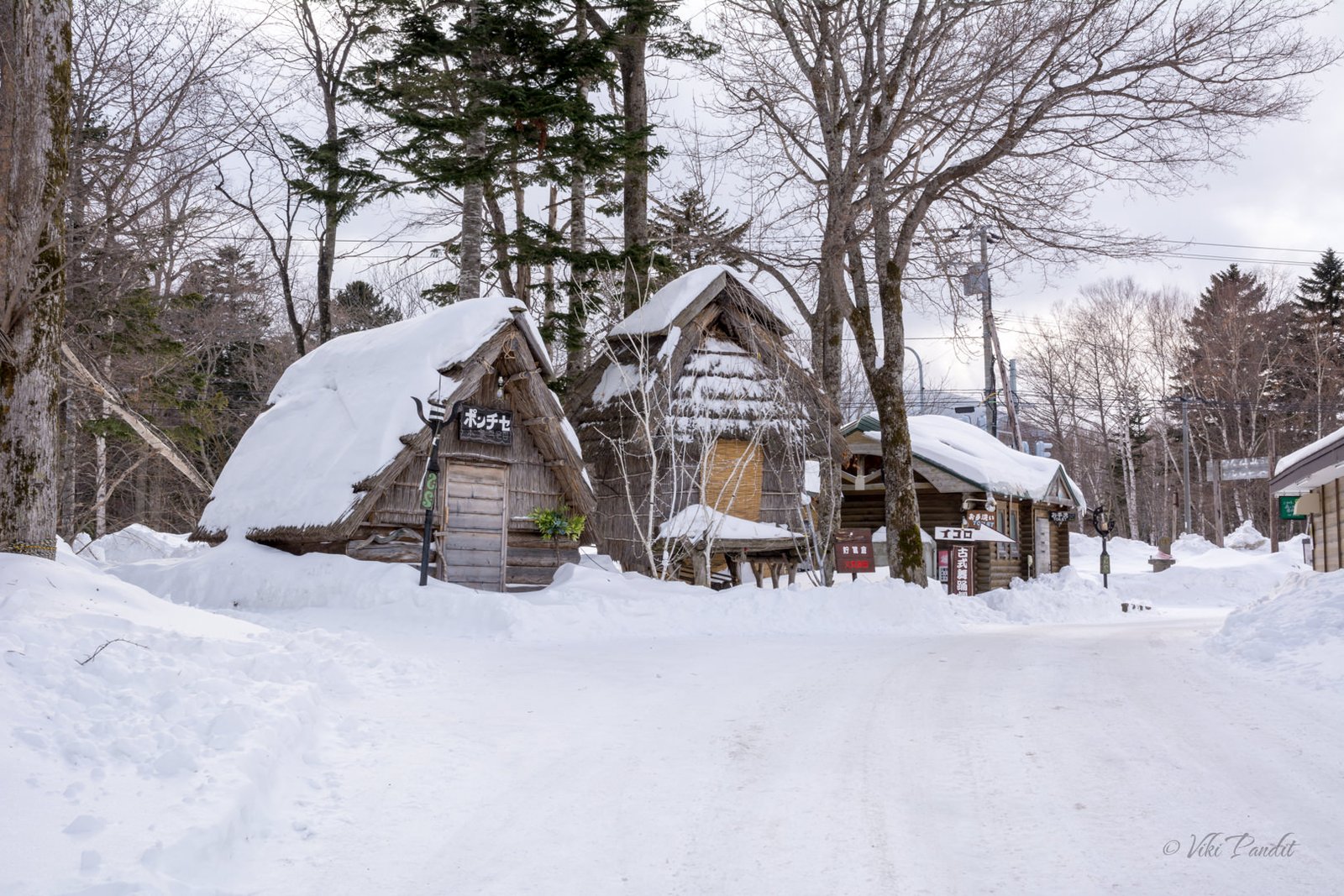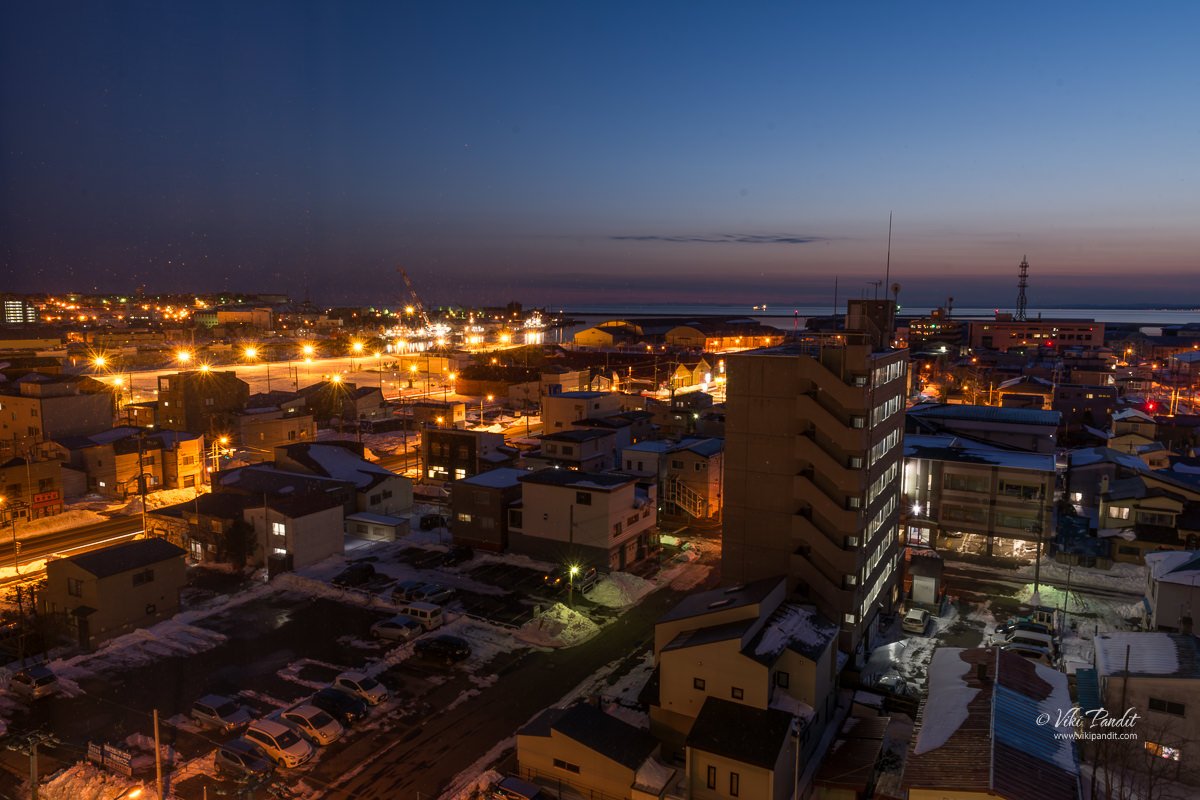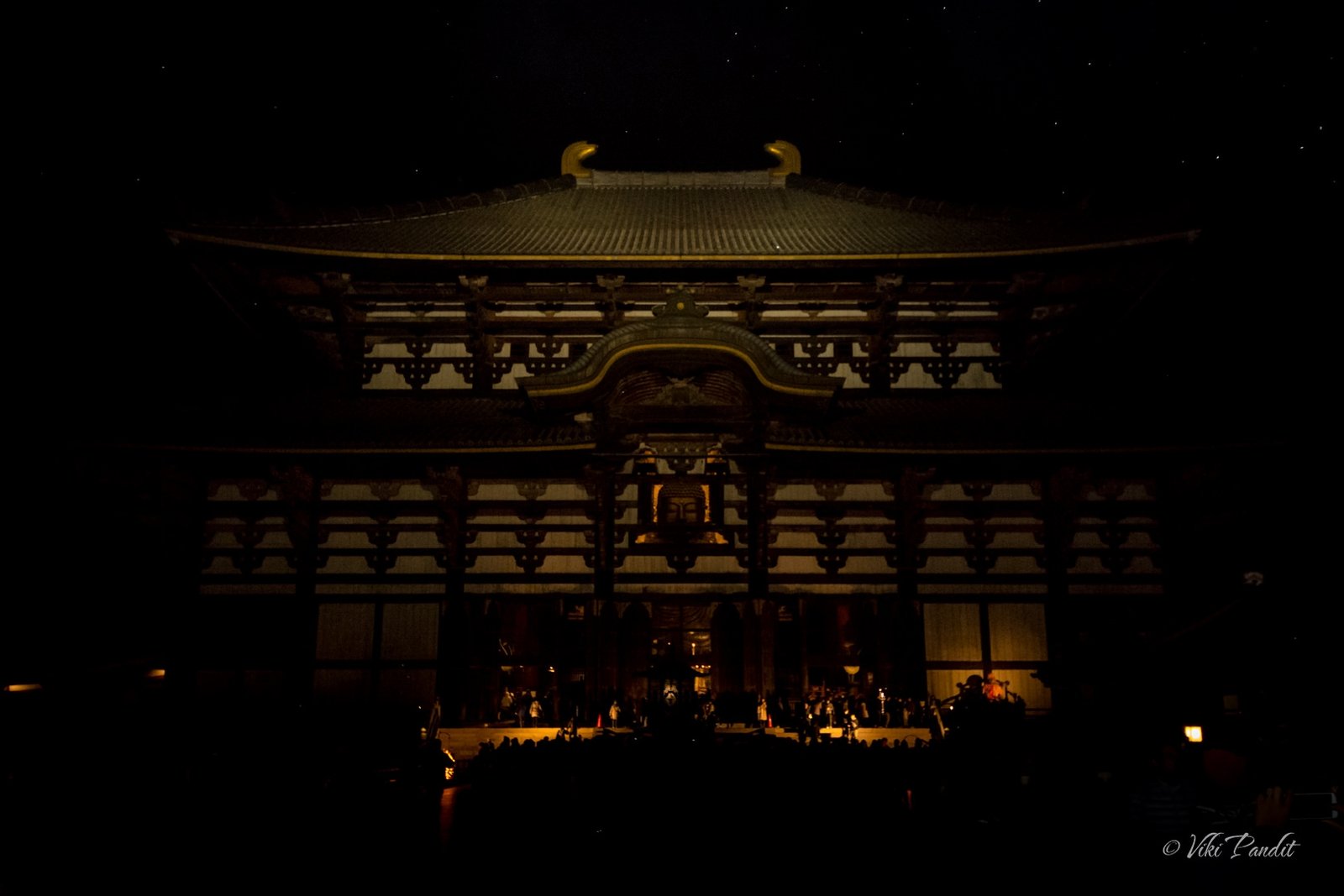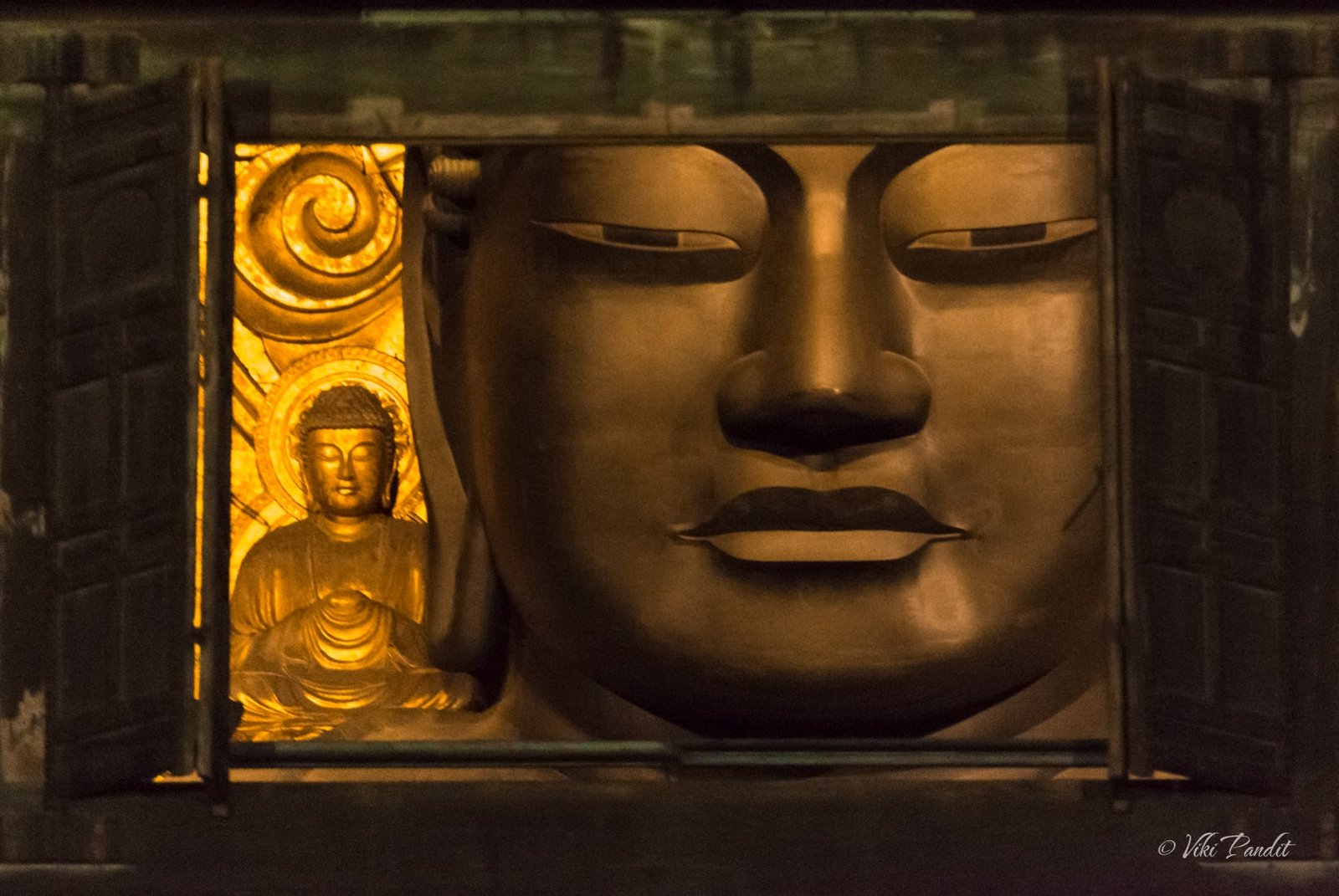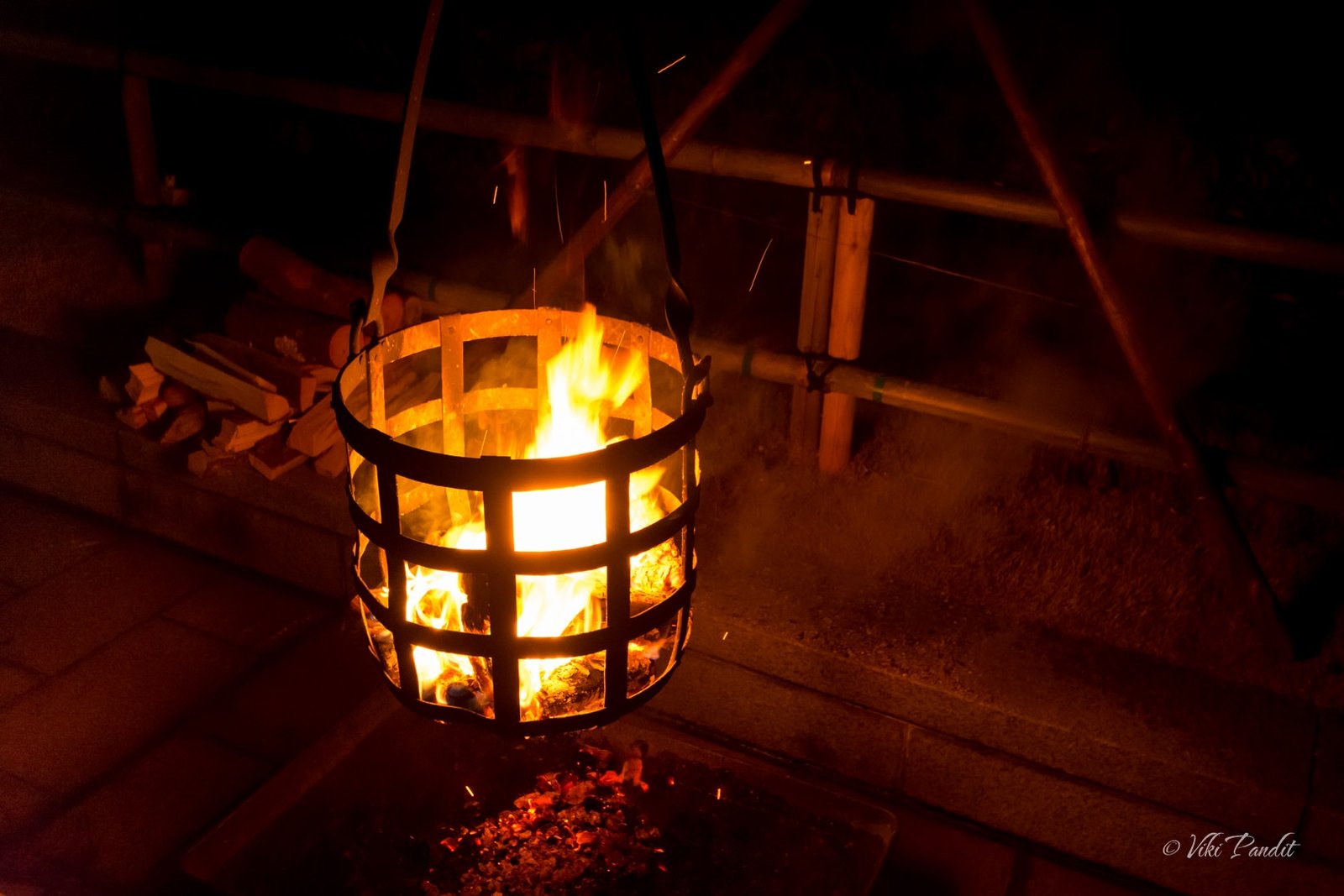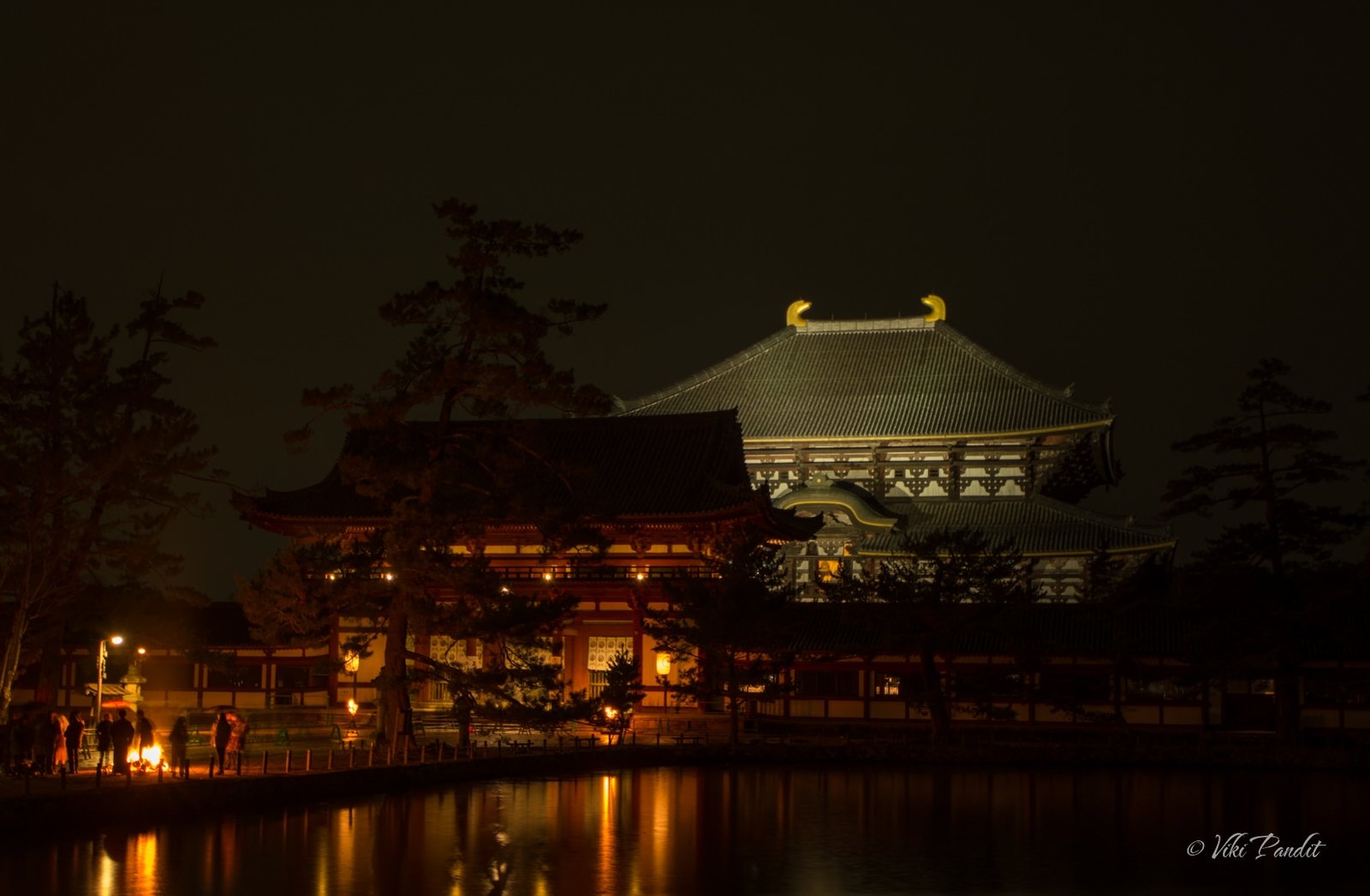From the sparkling Lake Mashu, the White Pirika bus rode on towards Lake Akan. Shitona, our tour guide told us it was going to be a long ride of about an hour. On the way, she kept giving out more information about the lake. I couldn’t understand a word of Japanese, but Mani translated some of it for me. She went on to tell us stories of the area. She even sang a couple of folk songs for us to which I took an immediate liking. We rode on, past unspoiled primitive forest in its natural beauty, laid barren by the harsh winter.
We were lodged in Kushiro City, nestled in the eastern part of Hokkaido, Japan’s northernmost island. The coastal city is famous for its picturesque wetlands, particularly the Kushiro Shitsugen National Park, one of Japan’s largest and most pristine marshlands. In the morning we had already explored the lovely Lake Kussharo and the mesmerizing Lake Mashu.
Lake Akan
Lake Akan (阿寒湖, Akanko) is a crater lake in Akan National Park. It is a bit bigger than Lake Mashu at about 26 km in circumference. The lake is the habitat of Marimo, a sphere-shaped, floating green algae, but it can only be witnessed in summer months when the frozen lake melts. In winter many activities such as skiing, snowmobile riding, and smelt fishing are conducted in the vicinity. Apart from all these amazing things, the major draw for me was the presence of a real Ainu village near the shore, where one can experience the traditional lifestyle and culture of the Ainu people.
We reached the lake area at around 3 p.m. Our tour guide informed us that we had an hour to roam around and get back to the bus by 4 p.m. It was a very short time to check out such a huge area. Most of our fellow travelers headed towards the lake. There are many interesting things to do at the lake but we had already decided on visiting the Ainu Kotan first. “Kotan” in the Ainu dialect means a village. This region has long been home to the indigenous Ainu people, who were the earliest settlers of Hokkaido.
We walked towards the village hoping to meet some Ainu people. The roads were extremely slippery because of the packed snow. While crossing one of the alleys, I found myself flat on the ice. It didn’t hurt much, physically, but oh yes, my pride was crushed!
After a few minutes, we were at a towering gate with a huge wooden owl with spread wings. Beyond the gate on both sides, one can find a number of wooden homes designed in the traditional Ainu style. The smaller huts lay scattered towards the end of the road. The snow was particularly thick here and it was tough to walk. Directly above the entrance to the kotan is a Blakiston’s fish owl, which was revered as a “god” by the Ainu.
The Ainu are the indigenous people of northern Japan, whose culture almost disappeared until recent efforts of restoration by the government. The remaining descendants of this disappearing race, reside mainly in Hokkaido, Sakhalin, and the Kurile Islands.
The Ainu have a deep reverence for nature and believe that gods exist in all things. The Ainu Kotan near Lake Akan is an attempt to preserve that culture and create awareness among culture enthusiasts. The village consisting of some 40 households have created craft shops selling wood carvings, embroidery, and musical instruments. At the village, visitors can learn about the lifestyle and culture of the Ainu people through traditional dance performances, puppet plays, instrument classes, and history lectures. One can also try some authentic Ainu cuisine in a traditional environment.
The bear holds immense significance in Ainu culture, and it plays a central role in their spiritual and everyday lives. Most of the shops are decorated with depictions of Bear and the Owl: two of the most revered creatures by the Ainu. If you look closely the shop shown below is decorated with a huge Bear head on the upper floor.
The Ainu believe that bears are sacred animals with divine spirits. They consider them to be messengers between the human world and the world of the gods. Bears are associated with various deities and are believed to possess supernatural powers. Bears feature prominently in Ainu folklore and oral traditions. Many myths and stories involve bears as characters, often portraying their interactions with humans and gods. The Iomante, also known as the “Bear Festival,” is one of the most important ceremonies in Ainu culture. It is a ritual that involves the symbolic sacrifice of a bear to send its spirit back to the gods. This ceremony is a way for the Ainu to express their gratitude to the bear for providing them with sustenance and to ensure the bear’s spirit’s safe journey to the divine realm.
This was a time when Hokkaido was still called “Ezochi” before the Japanese began full-scale settlement. The Ainu had no written language and thus both history and folklore were passed down only by word of mouth. Much has been lost along the way. The Ainu Memorial Museum at the end of the village offers programs for learning ancient dancing, wood carving, and embroidery.
Unfortunately, the museum was closed at the time. We made a u-turn at the museum and walked back, venturing into a few souvenir shops along the way. You can immerse yourself in year-round traditional Ainu performing arts, including “traditional Ainu dance,” “puppetry,” and the “Iomante Fire Festival,” at the theater named “Treasure” in the Ainu language.
Akanko Ainu Theater Ikor
The Akanko Ainu Theater Ikor, is a center dedicated to preserving Ainu history and tradition, where you’ll be privy to an ancient ceremonial dance specific to the Lake Akan region. You can watch dancers wield the “inau”, a wooden ritual tool that the “kamuy” (local deities) taught the Ainu how to make, which represents an offering to the gods. One of the programs focuses on the Ezo wolf, an animal that was revered as a “horokeu kamuy” but went extinct during the Meiji period, and expresses the lost “world of kamuy.”
Wood carving has long been an important part of Ainu culture. The shops were full of detailed wood carvings of high aesthetic quality. Among the favorites, I assume are the Bear and the Owl. I bought a couple of wooden owls as souvenirs. Wooden owls and bears in various shapes and sizes can be found in these shops. Some extremely detailed pieces can be as expensive as a hundred grand Yen.
The Ainu are greatly skilled in woodwork. There was some really amazing artistry there in those shops. In one of the shops, I noticed a work area in a corner, with all the interesting tools, the artisans use to create these wooden masterpieces. Lovely little owls carved out of wood were lying beside them, waiting for the final touches.
It is here that I came to know of Hisao Sunazawa, a Japanese self-taught woodcarver, painter, artist, and sculptor of Ainu origin. Sunazawa, who was born in 1931 and raised in Hokkaido’s Asahikawa city, earned the nickname “Bikky,” which means “frog” in the Ainu language, as a child. The prolific sculptor, painter, and graphic artist born with the first name of Hisao gained world renown for his woodcarvings in the style of the Ainu indigenous people of Hokkaido. He moved to the shore of Lake Akan when he was 22 and started creating woodcarvings at a souvenir shop. His sculptures, featuring biomorphic forms brimming with vitality have helped immensely to bring Ainu culture in front of the world.
Shopping along these souvenir shops, we didn’t realize that we had walked all the way back to the lake. We still had about 15 minutes to the scheduled departure so we wandered into the fully frozen lake. On the left, locals had set up small colorful tents with fishing holes. On the right people were enjoying themselves on snowmobiles.
Far away, on the eastern shore, the elegant Mt. Oakan lay covered in snow. Lake Akan is said to be the largest in Hokkaido, and the current kotan was built on land that was provided free of charge to the Ainu people by the “Maeda Ippo Foundation”, which owns part of the land around Lake Akan. We didn’t want to go towards the loud crowd near the snowmobile rides, so we loitered around near the fishing holes. After wandering around for some time on the vast lake, we strode back to the bus.
After a long day, we were on the way back to our hotel. As we bid farewell to the rugged mountain landscape, the sky above us began to undergo a breathtaking transformation. The deep, mesmerizing shades of purple that had initially graced the horizon had now intensified in their brilliance. It was as though nature itself was an artist, carefully layering different shades of purple upon a canvas of fading daylight.
With every passing day on this lovely island of Hokkaido, the stunning landscapes make me feel like a teenager, falling in crush for the first time. On the way back, Shitona charmed us with another melodious song. Numerous enigmas envelop the history and culture of the Ainu. The Ainu never developed a written language. Nevertheless, it remains a culture that has evolved over an extensive span, emphasizing the importance of acquiring a comprehensive comprehension while honoring their customs and lifestyle.
The bus dropped us off at our hotel by 6 p.m. From the window of our room, the city of Kushiro was glowing in the night. The city itself boasts a welcoming atmosphere with a charming downtown area filled with local shops, restaurants serving fresh seafood delicacies, and cultural attractions. Kushiro’s rich fishing heritage is evident in its bustling fish markets, where visitors can savor delectable seafood, including the renowned “kani” (crab).
A single day is too short to fully enjoy Akan National Park. If I had to do it over again, I would definitely plan a two-day trip and stay back overnight at Lake Akan. The Akan Bus also conducts a night stargazing tour at Lake Mashu, I regret having missed that.
Of course, nothing beats traveling by self-driven car. But if you are not I would highly recommend the White Pirika tour. They were great in making our day a memorable one. The stunning lakes of Akan National Park will forever remain etched in my memory. The people of Hokkaido are so polite and friendly. And then, there is this big mystery surrounding the origins of the Ainu. I am loving every bit of it!! Abashiri, here we come!
